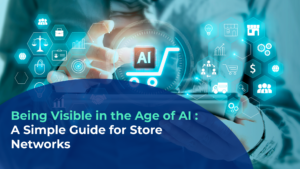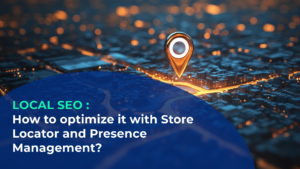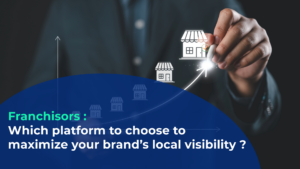Between brand communication and community engagement, retail digital marketing can no longer choose sides. It must play both fields simultaneously. Here’s how.
Why this topic is critical in 2025
With the multiplication of channels, the end of third-party cookies, soaring advertising costs, and the rise of generative AI, retail brands face a dual challenge:
- Building brand awareness at the national level
- Driving local engagement to attract customers to physical stores
This was the core topic discussed by Nathalie Terwingen (blue2purple) and Jean-Philippe Blerot (Carrefour) during a live session hosted by Frédéric from Mobilosoft. Here are the six key points to remember.
National vs. local : a successful digital marketing strategy in retail
1. Assign the Right Roles : National ≠ Local
“We need clarity: who does what, when, and for what objective.”
Nathalie Terwingen
National campaigns build the brand image. They define the narrative framework, brand territory, and key messages.
Local campaigns bring that narrative to life on the ground. They adapt the messaging, highlight promotions, codes of social networks.
The pitfall to avoid
Doing copy-paste between both levels. Or worse : completely disconnecting the messages.
2. Prepare and Coordinate Activations
For a multi-store network, coordination is key:
- Weekly themes sent to stores
- Templates and visuals provided by HQ
- Local flexibility to adapt content
“Store managers know their customers. They know how to speak to them.”
Jean-Philippe Blerot Head of Digital and eCommerce Carrefour Belgium.
Result : More authentic, human posts, often more engaging than those from the national level.
3. Use the Right Digital Levers
To perform locally, and guarantee good online visibility for local outlets, favour a hybrid, multi-level strategy :
- Always-on SEA for consistent visibility
- Local social ads for community targeting
- Organic content on Google Business Profile and TikTok or Instagram and Facebook
- Short videos to spark engagement
“Customers want human, authentic, and video content.”
Jean-Philippe Blerot
4. Treat Local SEO as a Strategic Asset
Often neglected, local SEO becomes central in the age of AI-powered conversational search, as demonstrated by the arrival of AI overview on Chrome.
Best practices :
- Regular posts on Google Business Profile
- Use of geo-targeted keywords
- Integration of links to individual store pages
- Respond regularly to customer reviews
“AI notices when you respond to customer reviews. It understands you’re a good brand.
It’s a super-powerful lever.”
Jean-Philippe Blerot
5. Define the Right KPIs
It’s not just about likes. The key indicators to track :
- Local engagement rate (5% is a solid benchmark)
- Traffic to business profiles
- In-store visits triggered by campaigns
- Revenue generated from digital activations
“We measure wins and flops weekly. Stores monitor who did what.”
Jean-Philippe Blerot
6. Anticipate the Impact of AI
Nathalie Terwingen emphasizes : AI tools like ChatGPT will transform how we search, consume, and compare. This gives renewed strategic importance to well-optimized content.
“In five years, AI tools may rival Google in search volume. We need to prepare now.”
Nathalie Terwingen
Key Takeaways
- National/local alignment is a team sport
- Local marketing builds connection with customers, it should be prioritized
- AI, SEO, and video will be tomorrow’s core pillars
🚀 Bonus : Free Audit of Your Local Visibility
Mobilosoft offers a 100% free digital local visibility audit for the first 10 applicants.
To claim yours,




